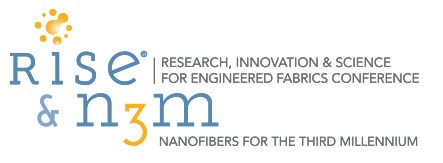
 Thad J. Ptak, PhD
Thad J. Ptak, PhD
VP of Research & Development, Columbus Industries Inc.
Thad Ptak has over 25 years of experience in filtration technologies, aerosol science and indoor air quality. He has conducted extensive research in the areas of particulate technology, aerosol science, air quality, instrumentation for particle generation and measurement. Currently he is VP of Research and Development at Columbus Industries. At this position he is responsible for the advanced research projects in air and liquid filtration. Prior to joining Columbus Industries in 2005, he served as VP of R&D of StrionAir, company developing advanced air purification systems based on utilization of electrostatic field.
Prior to StrionAir Thad worked on development new filtration applications, products and technologies in consumer products, commercial and residential HVAC, industrial filtration and automotive filtration applications for several different companies.
Dr. Ptak has published more than 50 technical papers related to the particle technology and filtration field, chaired and organized several sessions and co-chaired a filtration conference. He actively participates in technical societies and numerous standard committees.
Thursday 2:00pm - 5:00pm
Concurrent Session I: Filtration
Nanofiber Filter Media for Residential and Commercial HVAC
Abstract: Cleaning of indoor air is a valuable option for reducing building residents_ exposure to indoor air pollutants. The effect of hazardous air pollutants can be reduced by properly designed, installed and maintained HVAC systems. Several types of filter media are being utilized in HVAC applications. One of the types, nanofiber based filter media, despite the theoretical advantages and years of development, has not become a widespread and feasible option.
This paper presents results of comprehensive theoretical and experimental evaluation of nanofiber based media for air filtration. In addition to filter media, full size filters were also evaluated. Nanofiber media were evaluated in the lab and real life conditions to understand correlation between performance degradation in real life conditions and laboratory test methods. Besides filtration performance parameters of filter media and filters, a manufacturability of filters was also evaluated. Several physical parameters which are critical to manufacturing processes of filters were measured, and their impact on filter performance was assessed.
Despite relatively high values of the quality factor (QF) calculated for flat sheet nanofiber media, the performance of full filters, very often, did not substantiate these advantages. Other factors, such as thickness and stiffness of a multilayer structure contributed to the lower, than expected, performance of filters. Regardless of the advantages of nanofiber filter media, the successful commercialization still remains a significant challenge to filter media manufacturers.

